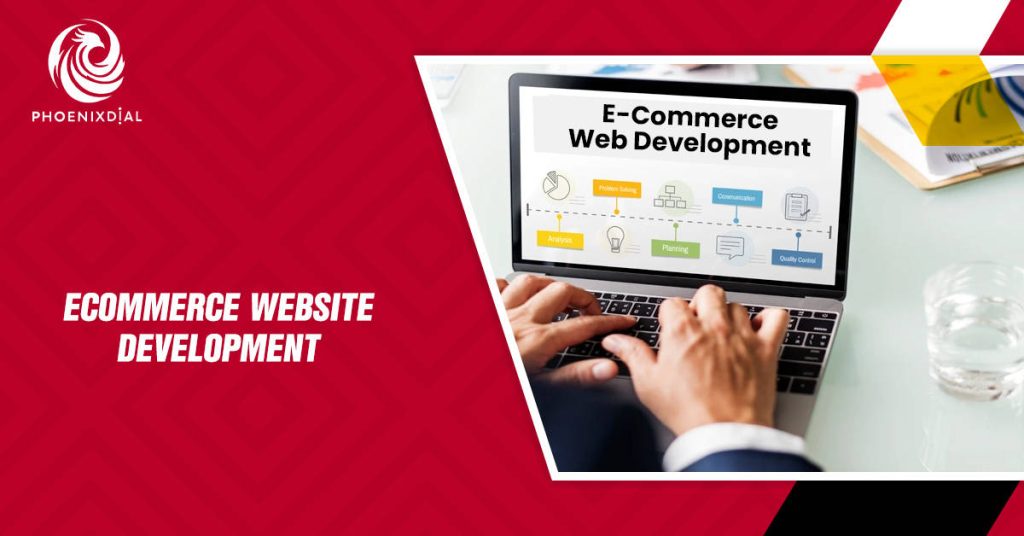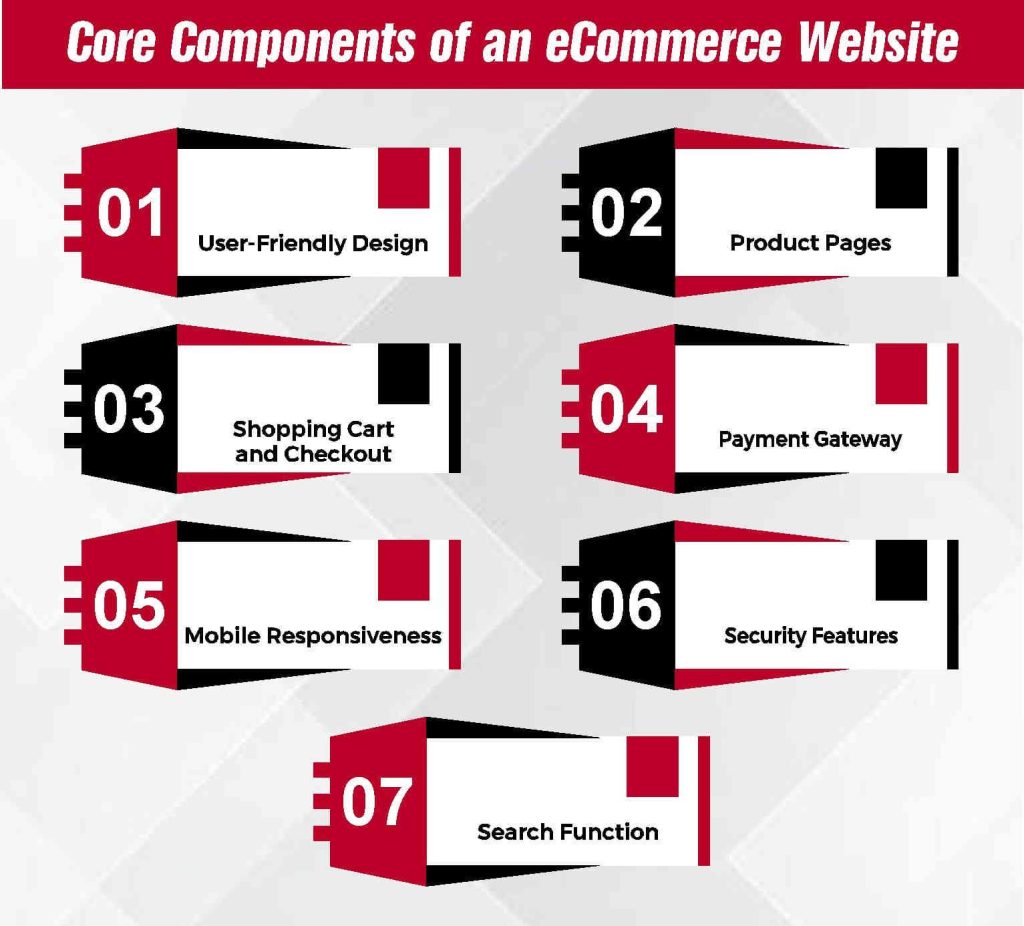

Did you know that over 70% of today’s customers prefer online shopping versus going to a physical store? The numbers continue to increase every year, and 2025 is looking to be the best yet for buying online. Everyone enjoys the ease of purchasing from the comfort of home, shopping around, comparing prices, and ordering.
But the problem starts there—most companies are not exploiting this potential market because they don’t have a good ecommerce website development strategy. Their websites might be slow, old, or not equipped with necessary features like secure checkout and mobile responsiveness. When that happens, potential customers leave and sales are lost.
This is where Phoenix Dial steps in. As a reputable service-oriented firm with a team of expert developers, we construct online shops that not only are beautiful but also optimized to perform. We concentrate on making websites smooth, safe, and easy to use so that businesses can acquire buyers, establish trust, and make money. We’ve had hands-on experience for decades, so we know how to mix design, technology, and marketing to make one seamless shopping experience.
Table of Contents
ToggleHere, we are going to dissect all that you should know about ecommerce website development in 2025. From why it matters now more than ever, to the core components every site needs, to the costs involved and a step-by-step process for building your own, this guide will help you understand how to create a website that grows your business online.
Start Growing Your Business Today
Get a free, personalized quote via WhatsApp for your business. No pressure—just smart solutions tailored to your goals.
Ecommerce site building is the process of creating an online store where companies exchange goods or services on the Internet. It can involve anything from web page design to the implementation of a shopping cart, payment gateway, and security mechanism. It’s basically the foundation of any Internet-based buying experience.
Imagine this: a bricks-and-mortar store requires shelves, counters, and a till. Similarly, ecommerce site design requires product pages, checkout zones, and secure payment facilities. These are minimum requirements for facilitating customers to shop at ease.
Companies usually look for an ecommerce website design company or engage professionals offering ecommerce web development service so that their store appears professional and functions well. These entail mobile-friendliness, fast loading, and easy navigation—these features ensure happy customers.
If you are wondering what is ecommerce website is in simple terms, it’s your online shop built with technology. Whether you’re planning to sell handmade crafts, clothes, or digital products, web ecommerce development helps you reach more customers than a local store ever could.
Online shopping is growing faster than ever in 2025. Reports show that more people now choose to buy online instead of visiting physical stores. This shift has made ecommerce website development a must for any business that wants to stay relevant.
Customer habits are also changing. The vast majority of customers go to their phone first, so a mobile store is no longer a nice-to-have but a necessity. Customers expect quicker checkout, easy navigation, and even targeted features such as product suggestions based on previous purchases. Without these, customers often leave and never come back.
For small businesses, ecom development is a chance to reach new customers beyond their local area. One example of this is a local bakery, which can sell cakes online and deliver within the city. Large businesses gain in that an ecommerce development website can accommodate thousands of visitors simultaneously and have a seamless shopping experience.
Whether you are just starting or already established, website development for ecommerce in 2025 is not about having a basic site—it’s about building a secure, fast, and user-friendly store that keeps customers coming back.

Core Components of an eCommerce Website
A successful online shop is not a pretty face. Fantastic ecommerce site design is about functionality that makes shopping convenient, safe shopping, and fun shopping. Every click should bring the customer closer to a purchase. And if one component is missing—such as bad product information, slow checkout, or lacking security—customers will go elsewhere before they buy. That’s why the best stores are carefully planned and built with the right components. Let’s look at the main ones your site must have.
Your site design should be seamless from the home page to check-out. Simple menus, clean layouts, and readable fonts allow customers to shop with confidence. An experienced ecommerce website design firm ensures the site appears modern, loads quickly, and functions for various customer activities. The goal is to have the customers at ease the moment they are on your website.
Product pages are the heart of any web ecommerce development. Each page should have high-quality photos, clear descriptions, prices, and customer reviews. Adding related product suggestions can also encourage buyers to spend more. The aim is to answer all customer questions right on the page so they can buy with confidence.
A simple cart and quick checkout process are critical. Advanced processes are more likely to drive away the cart abandonment customers, which is one of the largest issues for online businesses. Using ecommerce development expertise, you can create a process where customers add items, review them, provide information, and pay in a few simple steps. Offering a guest checkout option also makes the experience faster for new visitors.
A secure payment gateway builds trust. Customers need different modes of payment such as credit cards, PayPal, and mobile wallets. Professional web development service for ecommerce includes secure and trustworthy payment gateways that safeguard buyers and sellers. Adding “trusted payment” badges and clear refund policies can further improve confidence.
Most shopping in 2025 happens on phones. That’s why website development for ecommerce must include mobile-friendly design. A site that adjusts to all screen sizes keeps buyers engaged no matter what device they use. If your store doesn’t work well on mobile, you risk losing more than half of your customers.
Customers won’t shop if they feel unsafe. Features like SSL certificates, encrypted payments, and strong data protection are key in development of ecommerce site web. Displaying trust seals and offering secure login options can make shoppers feel more protected. Security isn’t just about safety—it also builds loyalty.
A strong search tool helps customers quickly find products. Adding filters for price, size, or category makes shopping easier, especially for stores with many products. The best web development for ecommerce always includes intelligent built-in time-saving search functionality that prevents customers from abandoning the site in frustration.
Creating an online store might seem like a troublesome task, but when divided into steps, the procedure is simple and straightforward. Excellent ecommerce site development is all about planning, design, features, and testing. Whether you are a small company or a new brand, following these steps will guide you to build a professional and seamless online store.
Before you begin, determine what you wish your store to achieve. Do you wish to sell a few items locally or internationally? Goal setting determines the scope, budget, and functionality of your project. The majority of businesses fail because they omit this step in developing an ecommerce site. Well-defined goals provide you with direction and avoid unnecessary errors.
The platform on which your store is built. Well-known ones are Shopify, WooCommerce, and Magento. Each has its advantages and disadvantages. Shopify is a beginner’s delight, WooCommerce is for WordPress users, and Magento is for big enterprises. If you want control in your own hands, you can also employ custom solutions from an ecommerce site designing company. Choosing wisely ensures your web ecommerce development matches your business needs.
Designing isn’t all about appearance—it’s about function. Great design streamlines the shopping experience so that it makes sense, with great visuals, and organized in a logical manner. A great ecommerce web development service is people-centered so that individuals can shop without becoming lost. A minimalistic design builds trust and compels buyers to linger, remember.
Product pages should have proper images, brief descriptions, and correct details such as size, price, and available status. Blog posts, FAQs, and guides assist sales as well as SEO optimization. Strong content answers customer questions and reduces returns. Good ecom development makes sure adding and updating products is simple.
Easier shipping and secure payment options are necessary. The customers must have some options such as credit card, PayPal, or wallets. Shipping also needs to be transparent with shipping time and price. Professional development ecommerce site web ensures smooth integration of both payments and shipping, making checkout stress-free for customers.
Test it all before going live—checkout flow, page speed, mobile responsiveness, and security. Bugs or mistakes lose sales and damage trust. Launch after testing and keep a close eye on your site. Best ecommerce web development doesn’t stop with launch—it’s an ongoing cycle of updates and refinement to stay competitive.
The price of ecommerce website development in 2025 varies based on numerous factors. All ecommerce stores are not equal in terms of price because companies have varying objectives, products, and features. Understanding what factors the cost boils down to will enable you to plan your budget.
Investment in quality ecommerce web development might seem expensive, but it is justified in terms of better user experience, increased sales, and sustainable growth.
Despite the best ecommerce website design, some companies miss out on sales due to preventable mistakes. These mistakes hinder shopping for customers and lower trust. These are the most prevalent mistakes you need to avoid.
A long or confusing checkout is the top reason customers leave without buying. If buyers must create an account, fill out too many forms, or click through several steps, they often quit. Good ecom development focuses on keeping checkout simple—just a few steps with guest checkout options.
Most shoppers in 2025 use their phones first. A store that doesn’t adjust well to mobile screens quickly loses customers. Website development for ecommerce must include mobile-friendly layouts, fast buttons, and clear navigation. A site that works on desktop but fails on mobile is a costly mistake.
People don’t wait for slow websites. A delay of even a few seconds can push visitors away. Ecommerce website building always calls for speed optimization—minifying images, being a good host, and cutting out fat code. Loading quickly keeps customers interested and increases sales.
An SEO-free web store is a store in a back alley. Most businesses ignore optimizing product titles, descriptions, and pages. With proper web ecommerce development, the search engine optimization is incorporated into the site structure from the beginning. This places your store in front of consumers on Google and other search engines.
Customers usually have queries regarding delivery, refund or return, or product information. Unless your site is easily providing support through chat, email, or FAQs, customers can leave. Professional ecommerce web development service puts customer support in the spotlight and makes it easily accessible. Having live chat or chatbots instils confidence and prevents buyers from abandoning the site.
In 2025, a good ecommerce website development plan is not a choice—it’s a choice. More and more people are shopping online, the behavior of customers is shifting, and companies that fall behind will end up being left behind. A properly developed ecommerce website provides you with speed, security, mobile-friendliness, and the proper features to make customers happy.
The time to begin building or designing your store is today. Whether you’re a small business starting out online or a big company growing your existing platform, the right ecommerce development strategy can place you in front of more individuals and grow at a faster rate.
Want a seamless and successful online shop? Get in touch with us for professional assistance, and let us help your concept become a strong ecommerce website that generates returns.
No, you don’t need coding skills. Platforms like Shopify, WooCommerce, and Wix let you build an online store with easy drag-and-drop tools.
On average, it can take 2–12 weeks depending on the size, features, and complexity of your website.
Shopify and Wix are great for beginners because they are simple to use, affordable, and come with built-in eCommerce features.
Yes, an eCommerce website helps you reach more customers, sell 24/7, and expand beyond local markets—making it a powerful growth tool.
© 2025 Phoenix Dial
WhatsApp us